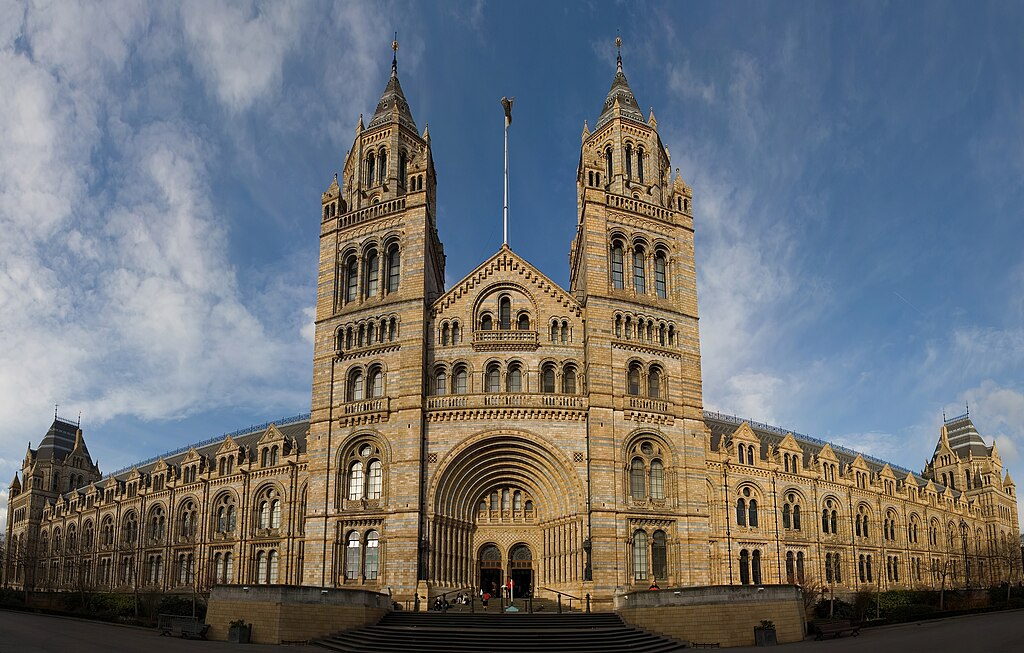The pursuit of bringing dinosaurs back to life has captivated human imagination since the first fossils were identified. While we can’t resurrect these magnificent creatures through genetic engineering (despite what “Jurassic Park” might suggest), museums worldwide have achieved the next best thing: creating startlingly lifelike dinosaur models that transport visitors back millions of years. The evolution of paleontological knowledge, combined with advances in technology and artistry, has revolutionized how we visualize extinct species. Today’s museum dinosaurs are light-years beyond the stiff, scientifically inaccurate sculptures of the past, incorporating cutting-edge research and techniques to achieve unprecedented realism. This article explores the most impressive dinosaur reconstructions ever created, the science and artistry behind them, and how they’ve transformed our understanding of prehistoric life.
The Evolution of Museum Dinosaur Models

The history of dinosaur models in museums spans more than 150 years, with each generation reflecting the scientific understanding of its time. Early Victorian models, like those at Crystal Palace Park, created by Benjamin Waterhouse Hawkins in the 1850s, depicted dinosaurs as lumbering, lizard-like creatures—a reflection of the limited fossil evidence available. By the mid-20th century, dinosaurs were reimagined as more active but still depicted as tail-dragging, cold-blooded reptiles. The “Dinosaur Renaissance” of the 1970s and 1980s, led by paleontologists like Robert Bakker, transformed our understanding of dinosaurs as active, possibly warm-blooded animals. Today’s models incorporate findings from multiple scientific disciplines, including paleontology, comparative anatomy, biomechanics, and even molecular biology, resulting in reconstructions that are continually refined as new evidence emerges. This progression demonstrates not just advancing technical skill, but an ever-deepening scientific understanding of these ancient creatures.
The “Stan” T. Rex at The Manchester Museum
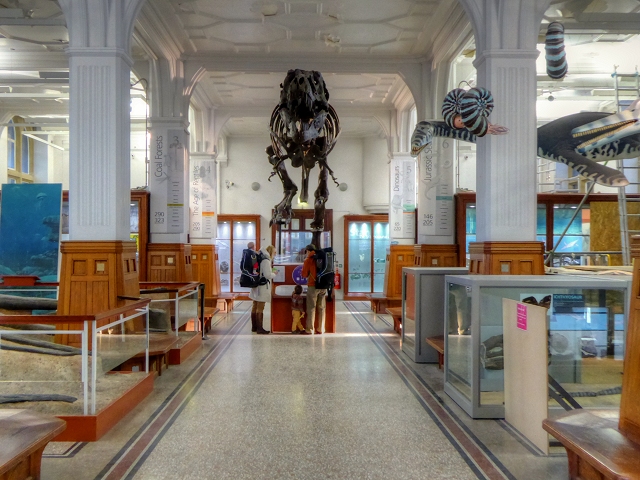
Among the most impressive dinosaur reconstructions ever created is the “Stan” Tyrannosaurus rex model at The Manchester Museum in the UK. Based on one of the most complete T. rex skeletons ever discovered (found in South Dakota in 1992), this model represents the pinnacle of scientific accuracy combined with artistic mastery. Standing over 12 feet tall and stretching 40 feet from nose to tail, the model features individually placed scales and wrinkles based on studies of reptile skin and close examination of rare skin impressions. The musculature was developed with input from veterinary anatomists who specialize in large predators, ensuring the body proportions and muscle attachments accurately reflect how this predator would have moved. Perhaps most striking are the eyes, which were crafted with the assistance of ophthalmologists specializing in reptilian vision, creating a piercing gaze that seems to follow visitors throughout the exhibit. The model even incorporates subtle coloration based on the latest theories of dinosaur pigmentation derived from fossil feather studies.
Paleoartist Gregory S. Paul’s Influence on Modern Reconstructions
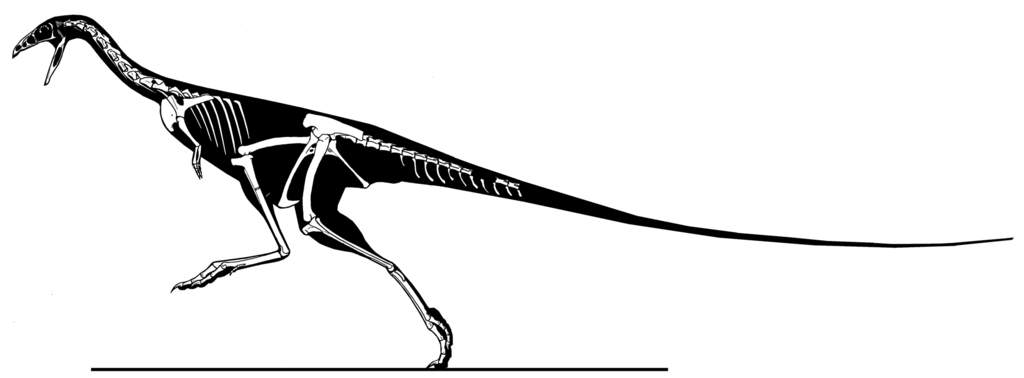
No discussion of realistic dinosaur models would be complete without acknowledging the transformative influence of Gregory S. Paul, whose scientific illustrations revolutionized how we visualize dinosaurs. Paul’s anatomically rigorous approach to dinosaur reconstruction in the 1980s and 1990s challenged prevailing views and introduced a new standard of scientific accuracy that museum modelers now strive to meet. His lean, dynamic, and anatomically detailed dinosaurs—with properly positioned limbs and horizontal spines—were initially controversial but have since been vindicated by fossil evidence. The iconic Velociraptor and Tyrannosaurus designs seen in “Jurassic Park” were directly influenced by Paul’s work, which itself was based on careful skeletal studies. Today’s most respected museum models, including those at the American Museum of Natural History and London’s Natural History Museum, reflect Paul’s insistence on anatomical precision and his integration of fossil evidence from multiple specimens to create complete reconstructions. His methodical approach to reconstructing musculature and soft tissues from skeletal landmarks has become standard practice for serious paleoartists and model makers.
The Science of Skin and Scales

Creating realistic dinosaur skin represents one of the greatest challenges and most impressive achievements in modern museum models. Unlike bones, soft tissues rarely fossilize, leaving artists and scientists to make educated inferences based on limited evidence. The breakthrough came with the discovery of numerous skin impressions, particularly from hadrosaurs and ceratopsians, which revealed intricate patterns of scales, wrinkles, and texture variations across different body regions. Modern reconstructions utilize these findings alongside comparative studies of living reptiles and birds (modern dinosaur descendants) to create textures that aren’t merely generic “reptile skin” but specific to each species. The process typically involves sculpting individual scales by hand or through 3D modeling, followed by creating silicone molds that capture microscopic texture details. Multiple layers of specialized paints and translucent finishes are then applied to create the subtle variations in texture, oiliness, and translucency that characterize living skin. The Saurian Hall at Germany’s Senckenberg Museum features hadrosaur models with skin details so precise that individual scales were positioned according to preserved skin impressions, with varying patterns across different body regions exactly matching fossil evidence.
The American Museum of Natural History’s Blue Whale-Sized Breakthrough
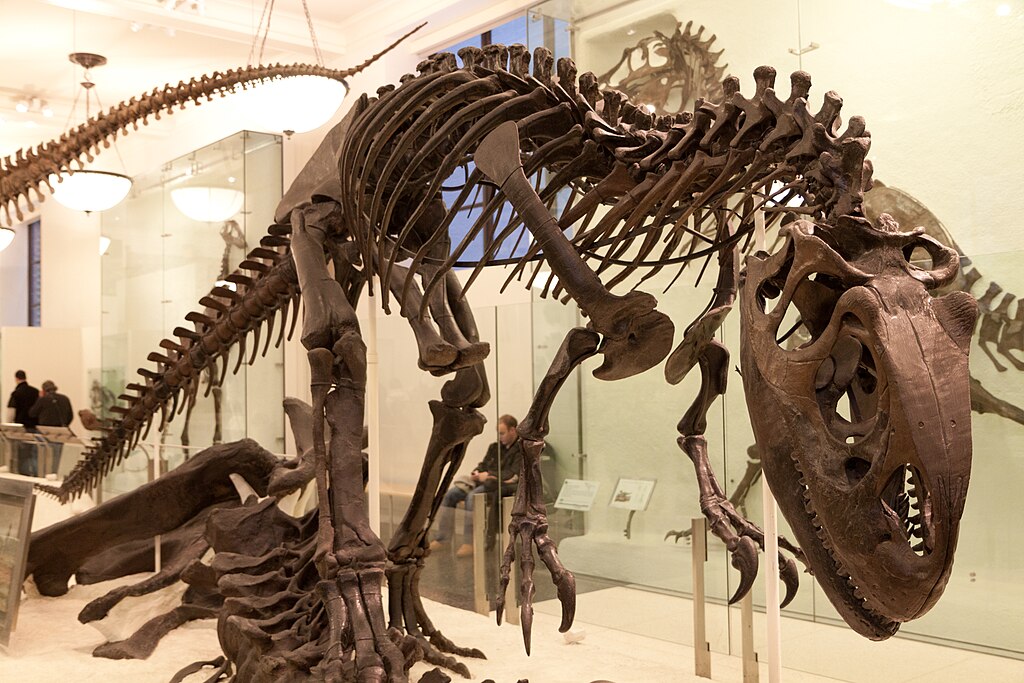
The American Museum of Natural History in New York achieved a landmark in dinosaur reconstruction with their titanosaur model, unveiled in 2016. This colossal sauropod model, based on a newly discovered species from Argentina, represents the largest dinosaur model ever accurately created, stretching 122 feet long. What makes this reconstruction particularly groundbreaking is not just its size, but the rigorous biomechanical analysis that informed its posture and proportions. The museum team collaborated with engineers who used finite element analysis (the same technique used to test structural integrity in architecture) to ensure the model accurately reflected how such a massive creature could support its weight. Computed tomography scans of the actual fossils allowed scientists to determine bone density patterns, muscle attachment sites, and weight distribution with unprecedented precision. The model incorporates synthetic materials that mimic the slight give and flexibility of living tissues, so subtle that the massive neck actually sways almost imperceptibly with air currents in the hall. Visitors can stand beneath the giant’s heart level and look up nearly 30 feet to its head, providing a visceral understanding of these creatures’ true scale that no photograph or illustration could convey.
Breathing Life into Feathered Dinosaurs

Perhaps no development has transformed dinosaur reconstructions more dramatically than the discovery that many dinosaurs possessed feathers. China’s Liaoning Province fossils revolutionized dinosaur paleontology by preserving delicate feather impressions, confirming the long-hypothesized evolutionary link between dinosaurs and birds. Creating realistic feathered dinosaur models presents unique challenges that have pushed the boundaries of museum exhibition techniques. The Royal Ontario Museum’s display of Yutyrannus huali—a 30-foot relative of T. rex covered in primitive feathers—demonstrates this new frontier in paleontological reconstruction. Each feather was individually created, with different types (down, display feathers, and proto-flight feathers) distributed accurately across the body based on fossil evidence. The feathers required innovative materials that could maintain their shape while conveying the lightness and subtle movement of real plumage. Model makers collaborated with ornithologists to understand feather structure and arrangement, resulting in a creature that bridges the conceptual gap between dinosaurs and modern birds. The Shanghai Natural History Museum has taken this approach even further with their Microraptor model, which features iridescent feathers that shift color as visitors move around the display, accurately reflecting the microscopic structures found in fossilized feather impressions that would have created such effects in life.
Animatronic Advancements

The most breathtaking recent advancement in dinosaur reconstruction combines traditional model-making with robotics to create animatronic displays that simulate living, breathing creatures. The Natural History Museum of Los Angeles County’s Dinosaur Hall features animatronic models that achieve unprecedented levels of realistic movement. Unlike earlier animatronics with obvious, jerky movements, these new models utilize advanced hydraulic systems originally developed for film special effects, capable of smooth, subtle movements that occur at different rates simultaneously—breathing, blinking, small head adjustments—creating the illusion of a living organism rather than a robot. The museum’s Triceratops model incorporates over 200 individual movement points controlled by sophisticated AI that varies the patterns to prevent repetitive, predictable movements. Infrared sensors detect visitor positions, allowing the dinosaur to “react” to human presence with subtle head turns or changes in breathing rate. The skin moves convincingly over the robotic framework thanks to a multi-layered silicon covering with varying thickness and elasticity that mimics how real skin and muscles interact. What makes these models scientifically significant beyond their theatrical impact is that each movement is based on biomechanical studies of the creature’s musculoskeletal system, turning the models into dynamic demonstrations of paleontological research.
The London Natural History Museum’s “Sophie” the Stegosaurus

The Natural History Museum in London houses what many experts consider the most scientifically accurate dinosaur reconstruction ever created: a complete Stegosaurus nicknamed “Sophie.” This model, based on an exceptionally complete skeleton found in Wyoming, represents a perfect marriage of artistic skill and scientific rigor. What distinguishes Sophie from other reconstructions is the unprecedented level of detail informing her creation. The museum team conducted CT scans of every bone, creating digital models that allowed them to precisely calculate muscle attachment points, range of motion, and even the dinosaur’s center of gravity. The team collaborated with veterinary experts specializing in large herbivores to accurately model soft tissues like the keratinous coverings of the iconic back plates. Sophie’s skin texture varies across different body regions based on comparative studies with modern reptiles and rare Stegosaurus skin impressions. Perhaps most impressively, the model incorporates research on the stegosaur’s unusual beak-like mouth and specialized teeth to accurately reconstruct its feeding apparatus, showing how this dinosaur would have browsed on low-growing vegetation. The model was subjected to peer review by leading paleontologists before its unveiling, establishing a new standard for scientific accuracy in museum displays.
Digital Modeling and 3D Printing Revolution

The integration of digital technology has revolutionized the creation of scientifically accurate dinosaur models. Modern paleontologists increasingly use CT scanning and photogrammetry to create detailed digital models of fossils, which can then be manipulated, studied, and used as the basis for physical reconstructions. The Field Museum in Chicago pioneered this approach with their updated Tyrannosaurus rex “Sue” exhibit, which used digital modeling to test hypotheses about posture and movement before creating the physical model. Each bone was scanned to create a digital skeleton that could be articulated in different positions, allowing scientists to determine the most anatomically plausible posture. This digital foundation enabled the creation of a model that accurately represents how the dinosaur’s weight would have been distributed and how its massive leg muscles would have functioned during movement. The digital approach also allows for rapid updates as new evidence emerges; when recent research suggested T. rex may have had lips covering its teeth rather than the crocodile-like exposed teeth previously depicted, the digital model could be modified, and new physical components 3D-printed. The Australian Museum in Sydney has taken this approach even further by creating augmented reality experiences that allow visitors to see multiple possible reconstructions of the same dinosaur, acknowledging areas of scientific uncertainty while demonstrating how different lines of evidence support alternative interpretations.
The Art and Science of Color Speculation
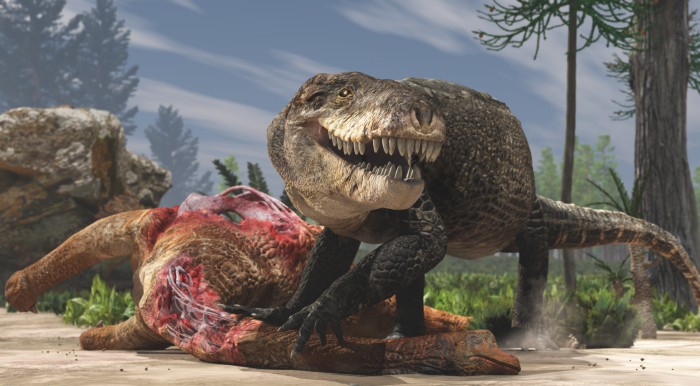
Determining the coloration of extinct dinosaurs poses one of the greatest challenges for realistic reconstructions, as color rarely fossilizes. However, revolutionary techniques developed in the last decade have allowed scientists to detect melanosomes—microscopic structures containing pigment—in exceptionally preserved fossils. The Royal Belgian Institute of Natural Sciences has incorporated these findings into their Microraptor and Anchiornis models, displaying these small dinosaurs with scientifically-based color patterns rather than speculative ones. Their Anchiornis model features the black and white patchy pattern with a rufous crest that fossil evidence suggests the actual animal possessed. For dinosaurs without preserved melanosomes, model makers employ techniques from evolutionary biology called phylogenetic bracketing—inferring traits based on related living species. The Denver Museum of Nature & Science’s recent models use this approach, consulting with experts on animal coloration to create patterns that serve ecologically plausible functions like camouflage, thermoregulation, or display. Their Parasaurolophus model features subtle countershading (darker above, lighter below) common in many modern large herbivores, along with disruptive patterning that would break up its outline when viewed by predators in its forest environment. These evidence-based approaches to color have replaced the arbitrary green and brown tones that dominated older reconstructions, resulting in dinosaurs that appear more like real animals adapted to specific environments.
Bringing Dinosaurs to Life at the Tokyo National Museum of Nature and Science

Japan’s Tokyo National Museum of Nature and Science houses what many consider the most emotionally impactful dinosaur reconstructions ever created. Their “Dinosaur Forest” exhibition features family groups of dinosaurs engaged in natural behaviors, created with a level of detail and naturalism that transcends typical museum displays. The centerpiece is a family group of Maiasaura, a duck-billed dinosaur known from fossil nesting sites, showing adults caring for hatchlings in a scientifically accurate portrayal of dinosaur parental care. What distinguishes these models is their integration of subtle behavioral cues observed in modern animals—the protective posture of an adult Maiasaura standing over its young mimics behaviors seen in modern ground-nesting birds, their closest living relatives. The models incorporate micro-movements like breathing and subtle head adjustments, but also demonstrate careful attention to eye placement and gaze direction to create the impression of aware, sentient creatures. Museum visitors frequently report emotional responses to these reconstructions, particularly the juvenile dinosaurs, which were created with proportions accurately reflecting fossil evidence of baby dinosaurs rather than simply being scaled-down adults. These models achieve what might be considered the ultimate goal of museum dinosaur reconstructions: not just scientific accuracy, but the convincing illusion that you’re observing living creatures in their natural environment.
Future Frontiers in Dinosaur Reconstruction

The next generation of museum dinosaur models is poised to incorporate technologies and scientific approaches that will push realism to new heights. Several museums are developing models with synthetic skin containing microscopic channels that can simulate blood flow and temperature gradients, allowing visitors to observe through thermal cameras how dinosaurs might have regulated their body temperature. The Smithsonian Institution is pioneering the use of programmable matter—materials that can change shape, color, or texture in response to electrical signals—to create displays that can physically transform to demonstrate different scientific hypotheses about dinosaur appearance. Researchers at the University of Manchester are developing artificial muscle fibers that contract and relax like real muscle tissue, potentially allowing future models to move through biologically accurate muscle action rather than mechanical systems. Advances in paleogenomics and ancient DNA analysis, while unable to recover actual dinosaur DNA, are providing better understanding of the genetic basis for traits in living dinosaur descendants, informing more accurate reconstructions. Perhaps most exciting is the development of “living skin” techniques that incorporate cultured reptile skin cells growing on synthetic scaffolds, potentially allowing future models to display the subtle surface qualities that only living tissue possesses. While full resurrection remains firmly in the realm of science fiction, the gap between representation and reality continues to narrow with each technological and scientific advance.
Conclusion

The most realistic dinosaur models ever created represent far more than impressive museum attractions—they are the physical embodiment of our evolving scientific understanding of prehistoric life. Modern reconstructions synthesize findings from dozens of scientific disciplines, from traditional paleontology to biomechanical engineering and molecular biology. Each new generation of models incorporates emerging evidence and technology, bringing us closer to the elusive goal of truly understanding how these creatures looked, moved, and behaved. Beyond their scientific value, these lifelike reconstructions serve a profound educational purpose, transforming abstract fossil knowledge into visceral encounters that ignite curiosity and wonder in visitors of all ages. As science advances and reconstruction techniques continue to evolve, future museum visitors will encounter dinosaurs that seem increasingly alive—bridging the 66-million-year gap that separates us from these magnificent creatures that once ruled our planet.

